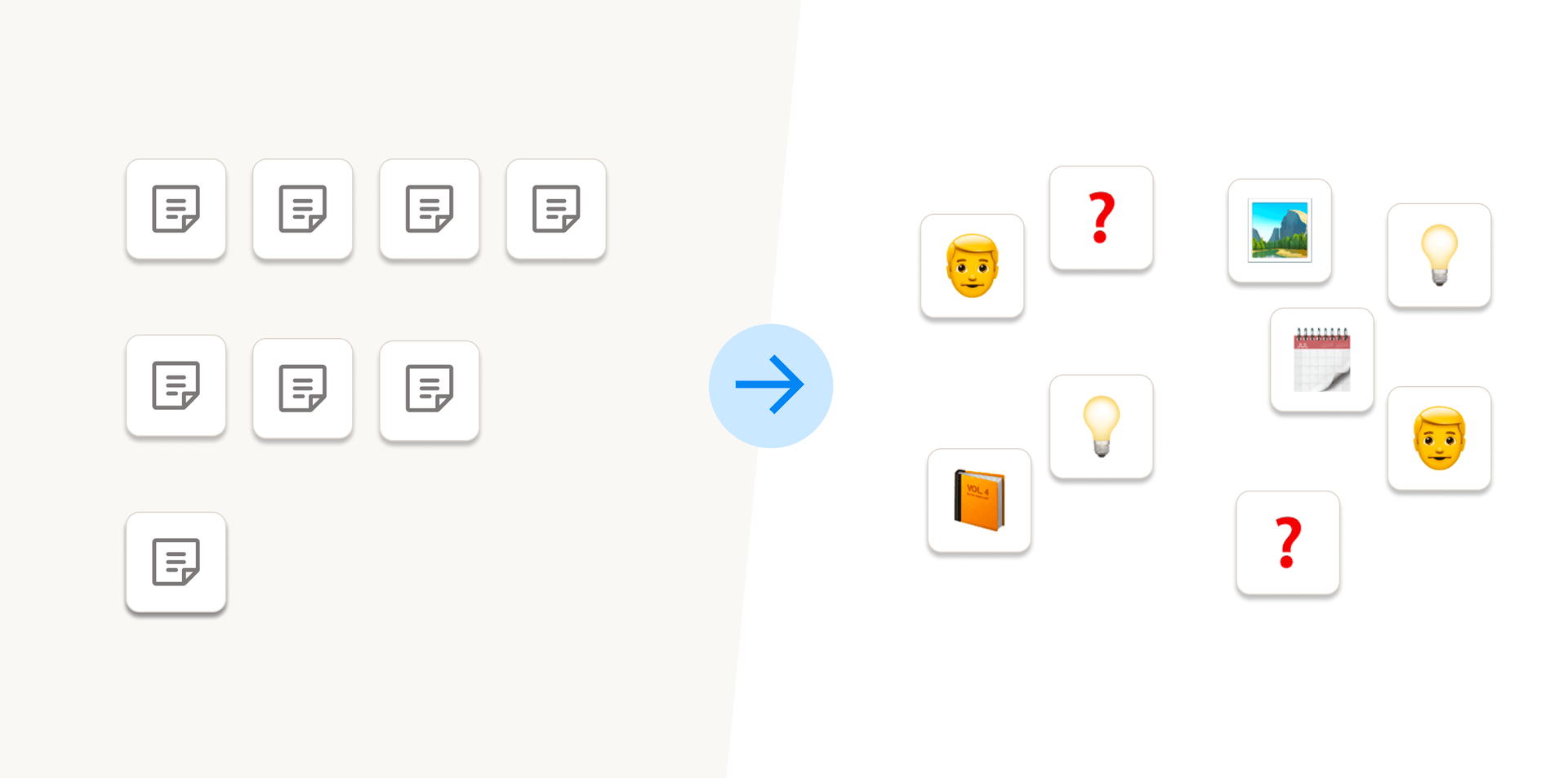
Not all notes are created equal
How do you take notes? You probably open your note-taking app, search for a suitable folder and create an empty page there. You write down what you intended to capture and close the app again. This works but after a while, your note-taking system might look quite monotonous: face-less pages with little meaning by themselves, a place where it’s demanding to find something, a place where you don’t want to be creative.
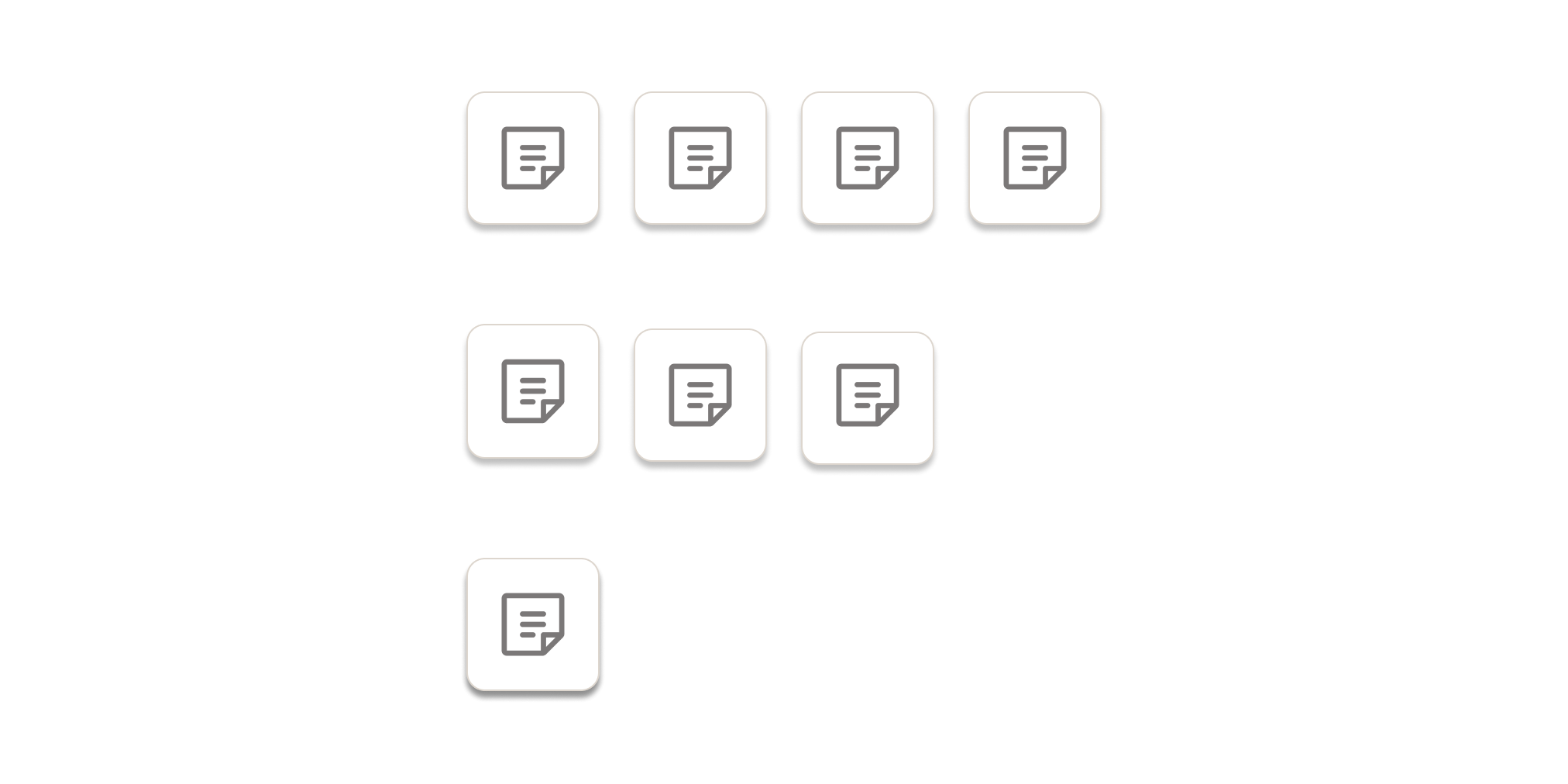
If we try to observe our thinking we will realize that our brains don’t work like that. We think about people, have questions, read books, or attend meetings. These are all real objects, not abstract plain pages. So why don’t our note-taking app work that way?
They can. Imagine you open your notes, and there is just a big button asking you if you want to create a thought, a question, or a meeting note this time. And when you create your meeting note, it already has some structure. It has a date, an option to add people who attended, and a field where you can enter the discussed topics.
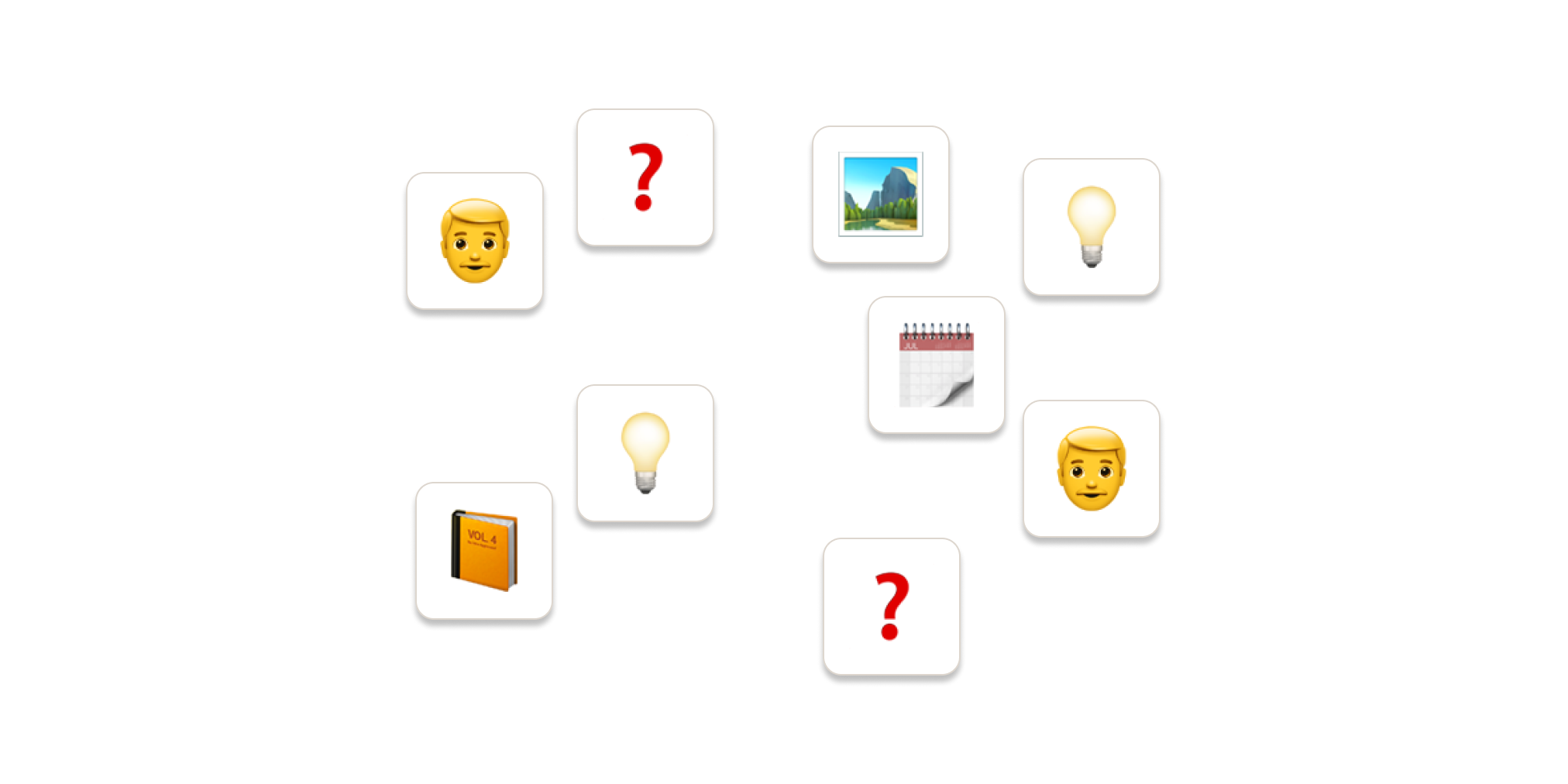
At Capacities, we call this concept typed note-taking. Your whole second brain is based on objects having a type and different properties. You don’t start with an empty page anymore but have a structure that helps you capture information. And on top, you don’t have to think about the organization before you even start writing. Instead, you will find all your meeting notes in one place. You can start organizing them when you have a clearer picture of what you created.
Change the way you take notes, it will impact the way you think.
Continue your journey on exploring a better way of taking notes by learning why organizing in folders is limiting. If you want to know more about typed note-taking, read our tutorial on how to create typed notes.
📚 Read more
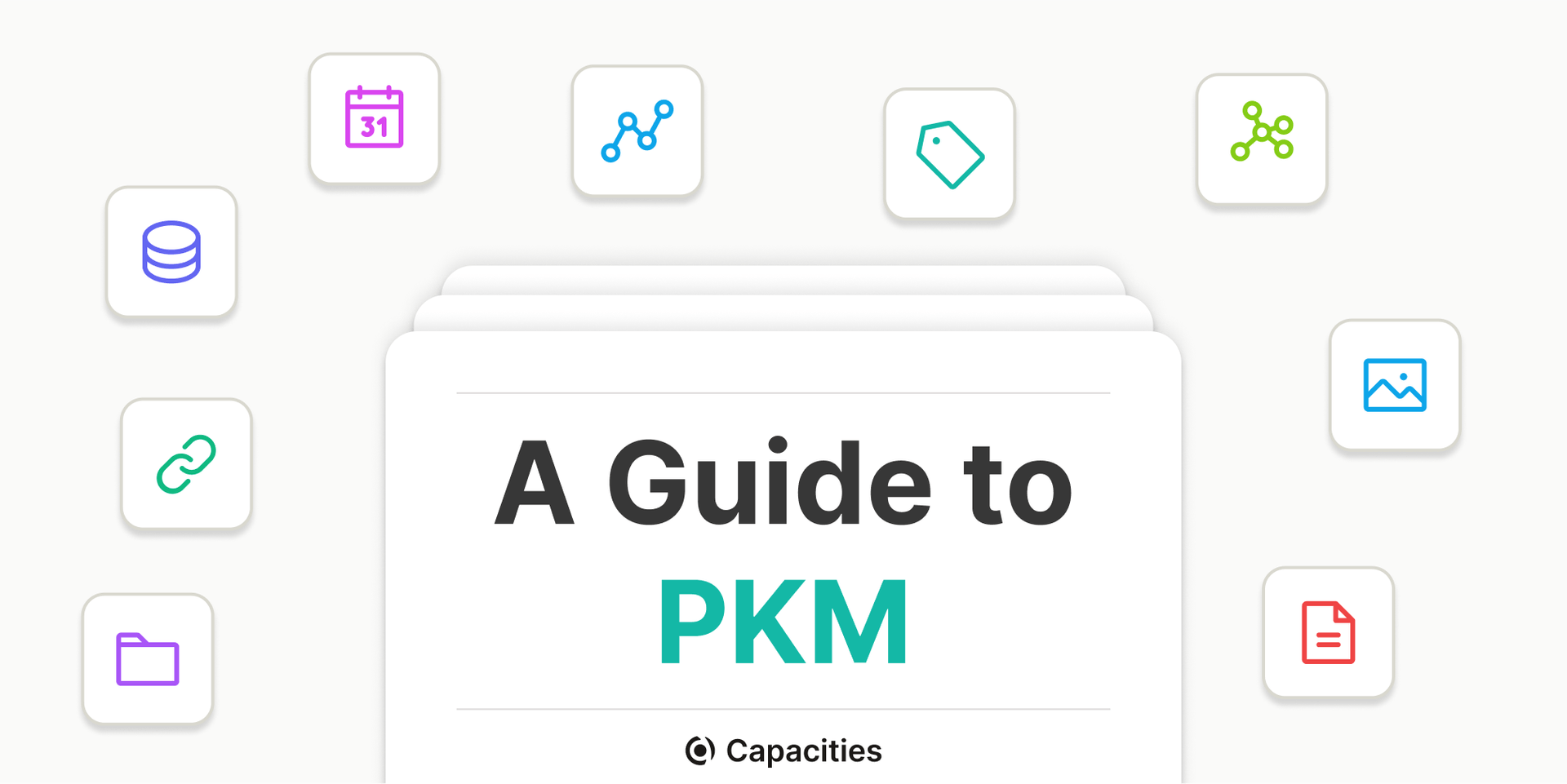
A Guide to Personal Knowledge Management with Capacities
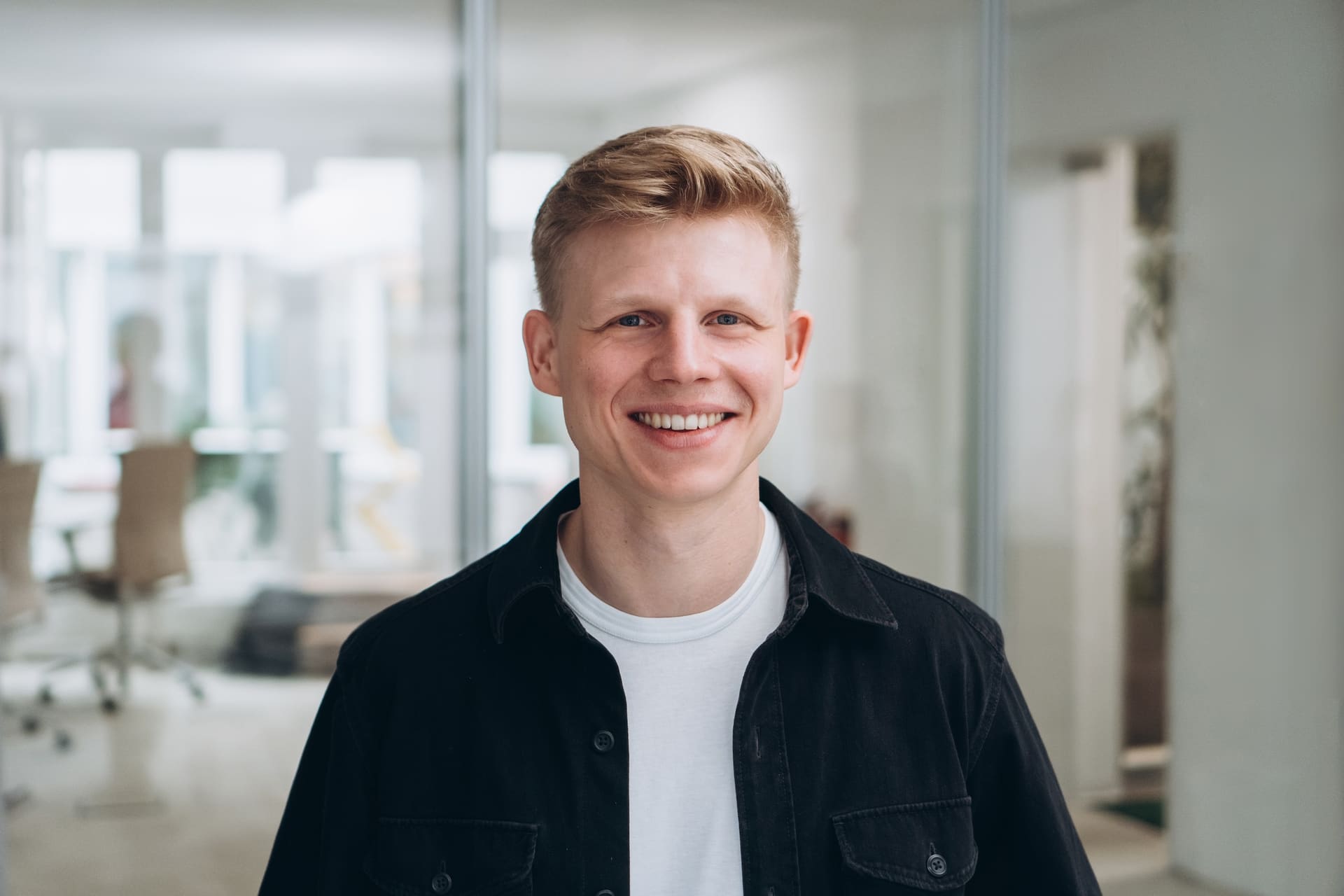
Michael von Hohnhorst
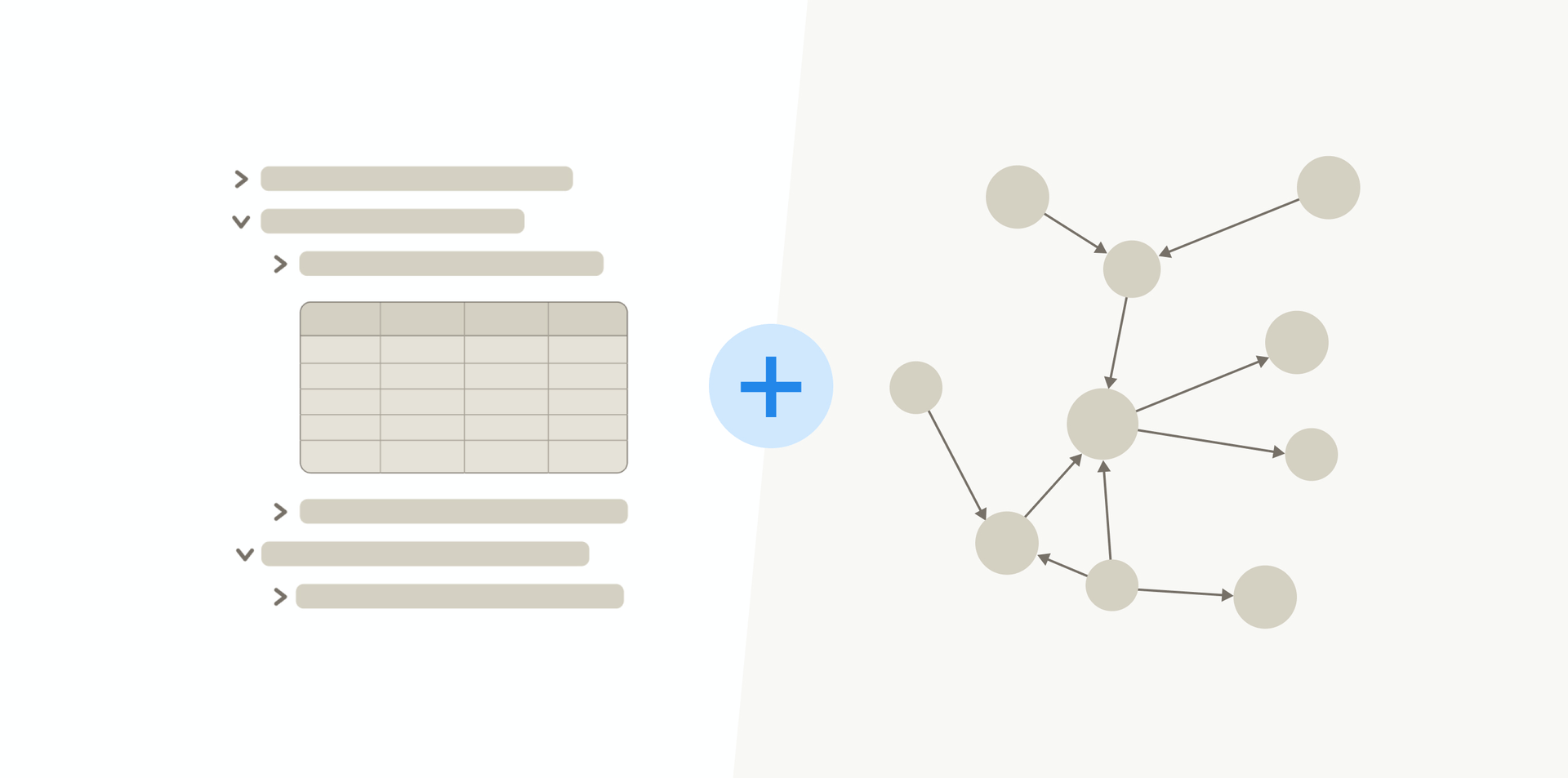
How to create the knowledge base for your life
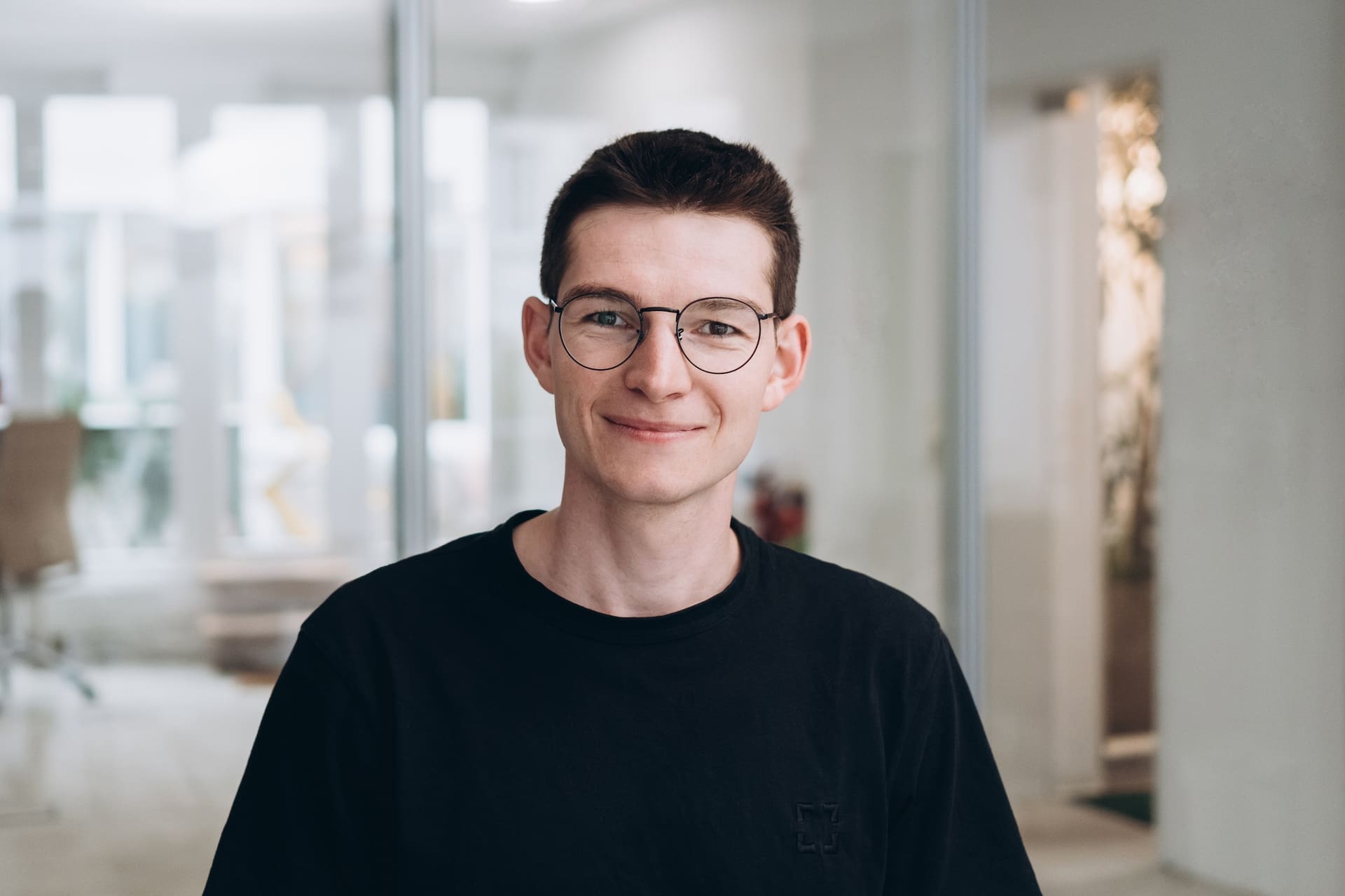
Steffen Bleher